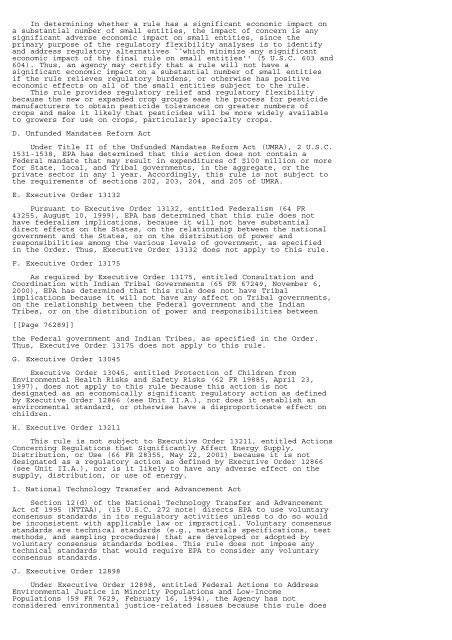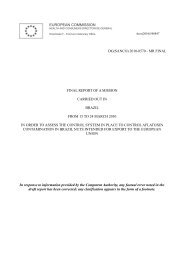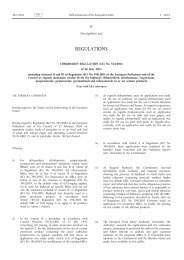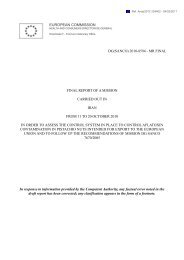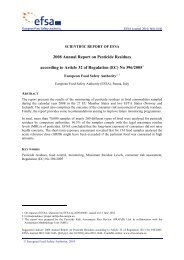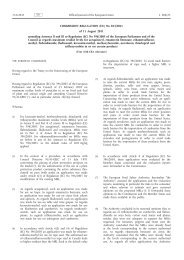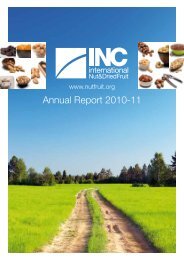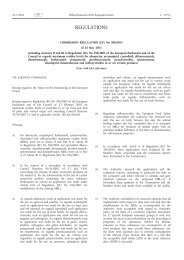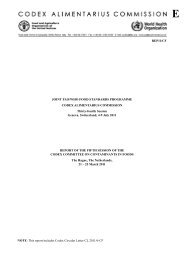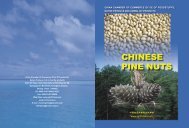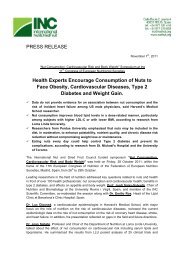This action is one in a series of planned crop group updates. EPAprepared an analysis of the potential costs <strong>and</strong> benefits related to itspesticide tolerance crop grouping regulations for[[Page 76288]]the first crop grouping final rule, published December 7, 2007 (72 FR69150). This analysis is contained in ``Economic Analysis of theExpansion of the Crop Grouping Program.'' A copy of the analysis isavailable in the docket <strong>and</strong> is briefly summarized here.This is a burden-reducing regulation. Crop grouping has saved moneyby allowing the results of pesticide exposure studies for one crop tobe applied to other, similar crops. This regulation exploits thisopportunity for saving money by exp<strong>and</strong>ing certain existing crop groups<strong>and</strong> adding one new crop group. Crop groupings will assist in makingavailable lower risk pesticides for minor crops both domestically <strong>and</strong>in countries that export food to the U.S. Minor crop <strong>and</strong> specialty cropproducers will benefit because lower registration costs will encouragepesticide manufacturers to register more pesticides for use on minor<strong>and</strong>/or specialty crops, providing these growers with additional lowerriskpesticide options. The increased coverage of tolerances toimported commodities may result in a larger supply of imported <strong>and</strong>domestically produced specialty produce at potentially lower costs <strong>and</strong>treated with lower-risk pesticides which also benefit consumers. EPAbelieves that data from representative crops will not underestimate thepublic exposure to pesticide residues through the consumption oftreated crops. EPA <strong>and</strong> the Interregional Research Project Number 4 (IR-4), will more efficiently use resources as a result of the rule. EPAwill conserve resources if, as expected, new or exp<strong>and</strong>ed crop groupsresult in fewer emergency pesticide use requests from specialty cropgrowers. Further, new <strong>and</strong> exp<strong>and</strong>ed crop groups will likely reduce thenumber of separate risk assessments <strong>and</strong> tolerance rulemakings that EPAwill have to conduct. Further benefits come from internationalharmonization of crop classification <strong>and</strong> nomenclature, harmonizedcommodity import <strong>and</strong> export st<strong>and</strong>ards <strong>and</strong> increased potential forresource sharing between EPA <strong>and</strong> pesticide regulatory agencies in othercountries. Revisions to the crop grouping program will result in noappreciable costs or negative impacts to consumers, minor cropproducers, specialty crop producers, pesticide registrants, theenvironment, or human health. No crop group tolerance for a pesticidecan be established unless EPA determines that it is safe.An example of the benefits of crop groupings can be shown throughthe impact of changes to Crop Group 3 in a prior rulemaking (72 FR69150, December 7, 2007). That rulemaking exp<strong>and</strong>ed Crop Group 3, BulbVegetables from 7 to 25 crops, an increase of 18 from the original cropgroup. Prior to the expansion of the subgroup, adding tolerances forthe 18 new crops would have required at least 18 field trials at a costof approximately $5.4 million (assuming $300,000 per field trial),whereas after promulgation of the exp<strong>and</strong>ed group these 18 new cropscould obtain coverage under a Crop Group 3-07 tolerance with no fieldtrials in addition to those required on the representative commodities(which did not change with the expansion of the group). Fewer fieldtrials means a greater likelihood that these commodities will obtaintolerance coverage under the FFDCA, aiding growers, <strong>and</strong> theadministrative costs of both the IR-4 testing process <strong>and</strong> the EPAreview process will be reduced.No comments were received on the costs or burdens. The EconomicAnalysis was not revised.B. Paperwork Reduction ActThis rule does not contain any new information collectionrequirements that would need approval by OMB under the provisions ofthe Paper Reduction Act (PRA), 44 U.S.C. 3501 et seq. However, the ruleis expected to reduce m<strong>and</strong>atory paperwork due to a reduction inrequired studies. The rule will have the effect of reducing the numberof residue chemistry studies because fewer representative crops wouldneed to be tested under a crop grouping scheme, than would otherwise berequired.C. Regulatory Flexibility ActPursuant to section 605(b) of the Regulatory Flexibility Act (RFA),5 U.S.C. 601 et seq., the Agency hereby certifies that this rule willnot have a significant adverse economic impact on a substantial numberof small entities. This rule does not have any direct adverse impactson small businesses, small non-profit organizations, or small localgovernments.For purposes of assessing the impacts of today's rule on smallentities, small entity is defined as: (1) A small business according tothe small business size st<strong>and</strong>ards established by the Small BusinessAdministration (SBA); (2) a small governmental jurisdiction that is agovernment of a city, county, town, school district or special districtwith a population of less than 50,000; <strong>and</strong> (3) a small organizationthat is any not-for-profit enterprise which is independently owned <strong>and</strong>operated <strong>and</strong> is not dominant in its field.
In determining whether a rule has a significant economic impact ona substantial number of small entities, the impact of concern is anysignificant adverse economic impact on small entities, since theprimary purpose of the regulatory flexibility analyses is to identify<strong>and</strong> address regulatory alternatives ``which minimize any significanteconomic impact of the final rule on small entities'' (5 U.S.C. 603 <strong>and</strong>604). Thus, an agency may certify that a rule will not have asignificant economic impact on a substantial number of small entitiesif the rule relieves regulatory burdens, or otherwise has positiveeconomic effects on all of the small entities subject to the rule.This rule provides regulatory relief <strong>and</strong> regulatory flexibilitybecause the new or exp<strong>and</strong>ed crop groups ease the process for pesticidemanufacturers to obtain pesticide tolerances on greater numbers ofcrops <strong>and</strong> make it likely that pesticides will be more widely availableto growers for use on crops, particularly specialty crops.D. Unfunded M<strong>and</strong>ates Reform ActUnder Title II of the Unfunded M<strong>and</strong>ates Reform Act (UMRA), 2 U.S.C.1531-1538, EPA has determined that this action does not contain aFederal m<strong>and</strong>ate that may result in expenditures of $100 million or morefor State, local, <strong>and</strong> Tribal governments, in the aggregate, or theprivate sector in any 1 year. Accordingly, this rule is not subject tothe requirements of sections 202, 203, 204, <strong>and</strong> 205 of UMRA.E. Executive Order 13132Pursuant to Executive Order 13132, entitled Federalism (64 FR43255, August 10, 1999), EPA has determined that this rule does nothave federalism implications, because it will not have substantialdirect effects on the States, on the relationship between the nationalgovernment <strong>and</strong> the States, or on the distribution of power <strong>and</strong>responsibilities among the various levels of government, as specifiedin the Order. Thus, Executive Order 13132 does not apply to this rule.F. Executive Order 13175As required by Executive Order 13175, entitled Consultation <strong>and</strong>Coordination with Indian Tribal Governments (65 FR 67249, November 6,2000), EPA has determined that this rule does not have Tribalimplications because it will not have any affect on Tribal governments,on the relationship between the Federal government <strong>and</strong> the IndianTribes, or on the distribution of power <strong>and</strong> responsibilities between[[Page 76289]]the Federal government <strong>and</strong> Indian Tribes, as specified in the Order.Thus, Executive Order 13175 does not apply to this rule.G. Executive Order 13045Executive Order 13045, entitled Protection of Children fromEnvironmental Health Risks <strong>and</strong> Safety Risks (62 FR 19885, April 23,1997), does not apply to this rule because this action is notdesignated as an economically significant regulatory action as definedby Executive Order 12866 (see Unit II.A.), nor does it establish anenvironmental st<strong>and</strong>ard, or otherwise have a disproportionate effect onchildren.H. Executive Order 13211This rule is not subject to Executive Order 13211, entitled ActionsConcerning Regulations that Significantly Affect Energy Supply,Distribution, or Use (66 FR 28355, May 22, 2001) because it is notdesignated as a regulatory action as defined by Executive Order 12866(see Unit II.A.), nor is it likely to have any adverse effect on thesupply, distribution, or use of energy.I. National Technology Transfer <strong>and</strong> Advancement ActSection 12(d) of the National Technology Transfer <strong>and</strong> AdvancementAct of 1995 (NTTAA), (15 U.S.C. 272 note) directs EPA to use voluntaryconsensus st<strong>and</strong>ards in its regulatory activities unless to do so wouldbe inconsistent with applicable law or impractical. Voluntary consensusst<strong>and</strong>ards are technical st<strong>and</strong>ards (e.g., materials specifications, testmethods, <strong>and</strong> sampling procedures) that are developed or adopted byvoluntary consensus st<strong>and</strong>ards bodies. This rule does not impose anytechnical st<strong>and</strong>ards that would require EPA to consider any voluntaryconsensus st<strong>and</strong>ards.J. Executive Order 12898Under Executive Order 12898, entitled Federal Actions to AddressEnvironmental Justice in Minority Populations <strong>and</strong> Low-IncomePopulations (59 FR 7629, February 16, 1994), the Agency has notconsidered environmental justice-related issues because this rule does


